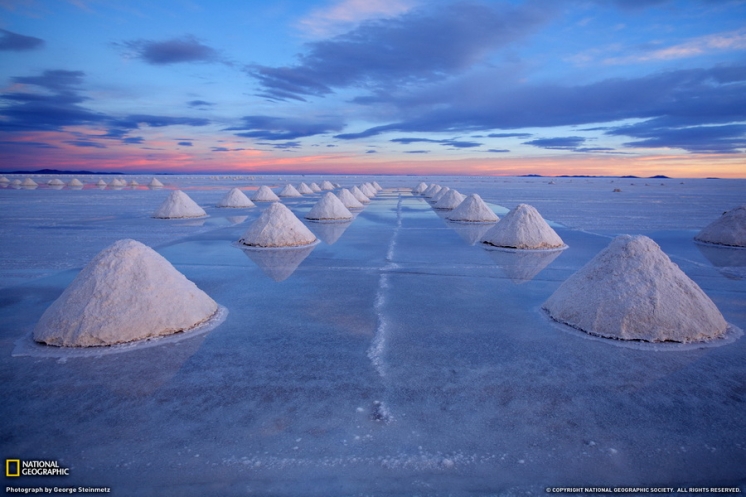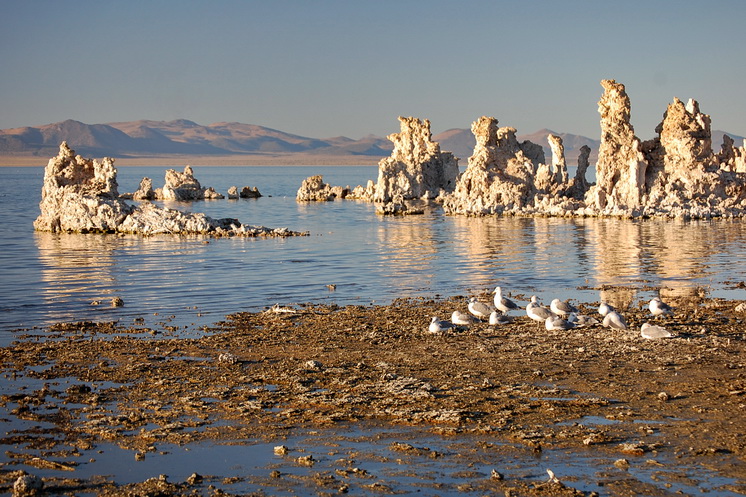Rock salt – halite

“Nothing is more useful than salt or sunshine.”
(Pliny the Elder, Roman naturalist)
Rock salt has always played a special role in our civilisation. It has been used as seasoning, but there has been something more to it, as if people could instinctively feel it contained ingredients that were beneficial to health. Humans have been using salt since times immemorial.
The earliest evidence of salt extraction comes from China in the third millennium BC. The first written record of salt is found in the Book of Job and dates back to around 2250 BC. As early as the Stone Age, salt was traded in barter. “Salt routes” criss-crossed the ancient world from the Dead Sea to India. The European salt routes were busy trade routes until the early modern period, one of which led from the Salzkammergut through Prachatice northwards to the Baltic Sea. Salt caravans still exist today, transporting salt from the salt mines of Bilma (Niger) and Taoudenni (Mali) to towns and villages on the southern edge of the Sahara Desert and the Sahel. The salt mines lie in the middle of the desert and the road to them is very difficult for trucks, which is why camel caravans have survived there until today. Salt was often used as a form of payment, too – Caesar’s legionaries received part of their pay in salt. Since ancient times, some cults have used salt in religious ceremonies. Japanese sumo wrestlers ward off evil demons before each round with a handful of salt thrown into the ring.
Types of deposits
There are salt deposits or solar salt production plants in almost every country worldwide, but it is the ocean that remains the world’s largest salt deposit. Its salty flavour comes from 18 million km3 of dissolved rock salt. The average salinity of seawater is 36‰ (36 grams of salt per litre); in general, subtropical seas in the Tropics are saltier than the polar seas due to higher evaporation, less freshwater input from rivers, etc. The Red Sea has the highest salinity of 42‰ with relatively few river inflows, limited contact with the ocean and high evaporation. By comparison, the salinity of the Dead Sea, which is a drainless lake in fact, is about 330‰.
Sources of salt are seas, lakes and groundwater solutions, lake basins, stratified deposits and salt pans called salt domes.

Solar salt is obtained by evaporating water in artificial or natural shallow basins from oceans, seas, salt lakes and springs in areas with a hot, dry climate.
Brines (mineralised groundwaters) are either seawaters buried by sedimentation or meteoric waters that have acquired their solute content by having passed through the atmosphere, weathering mantle and rocks. They can be divided into chloride, sulphate, carbonate, mixed, silicate, borate, phosphate, nitrate and acid brines. They can also be obtained by pumping from the vicinity of a flooded salt mine. Lake basins (playas) with saline clay-sand sediments are to be found in arid regions. In the rainy season, salts are dissolved in lake water, which dries up in the dry season, leaving behind a crust composed of salts. (e.g. Bristol Lake, Searles Lake in California; Mexico).
Stratified salt deposits are the result of chemical sedimentation in basins formed by weak, prolonged crustal movements (e.g. the Zechstein Basin in Europe, the Michigan Basin in North America) or in rift depressions at continental margins (e.g. the Danakil Plain in Ethiopia, the Sergipe Basin in Brazil) formed under specific conditions.
Salt domes are formed especially in the foreland of mountain ranges and consist of layered deposits shaped by overburden pressure. Salt reserves in these deposits were estimated at 16.4 trillion tonnes in the 1980s.
Source: Lomy a těžba
